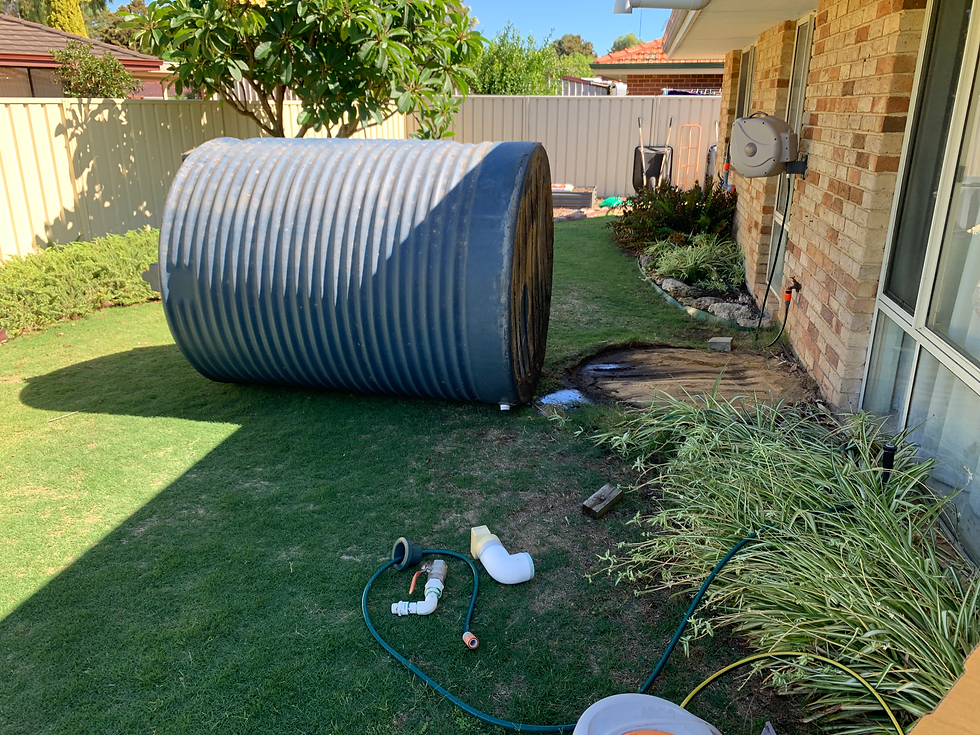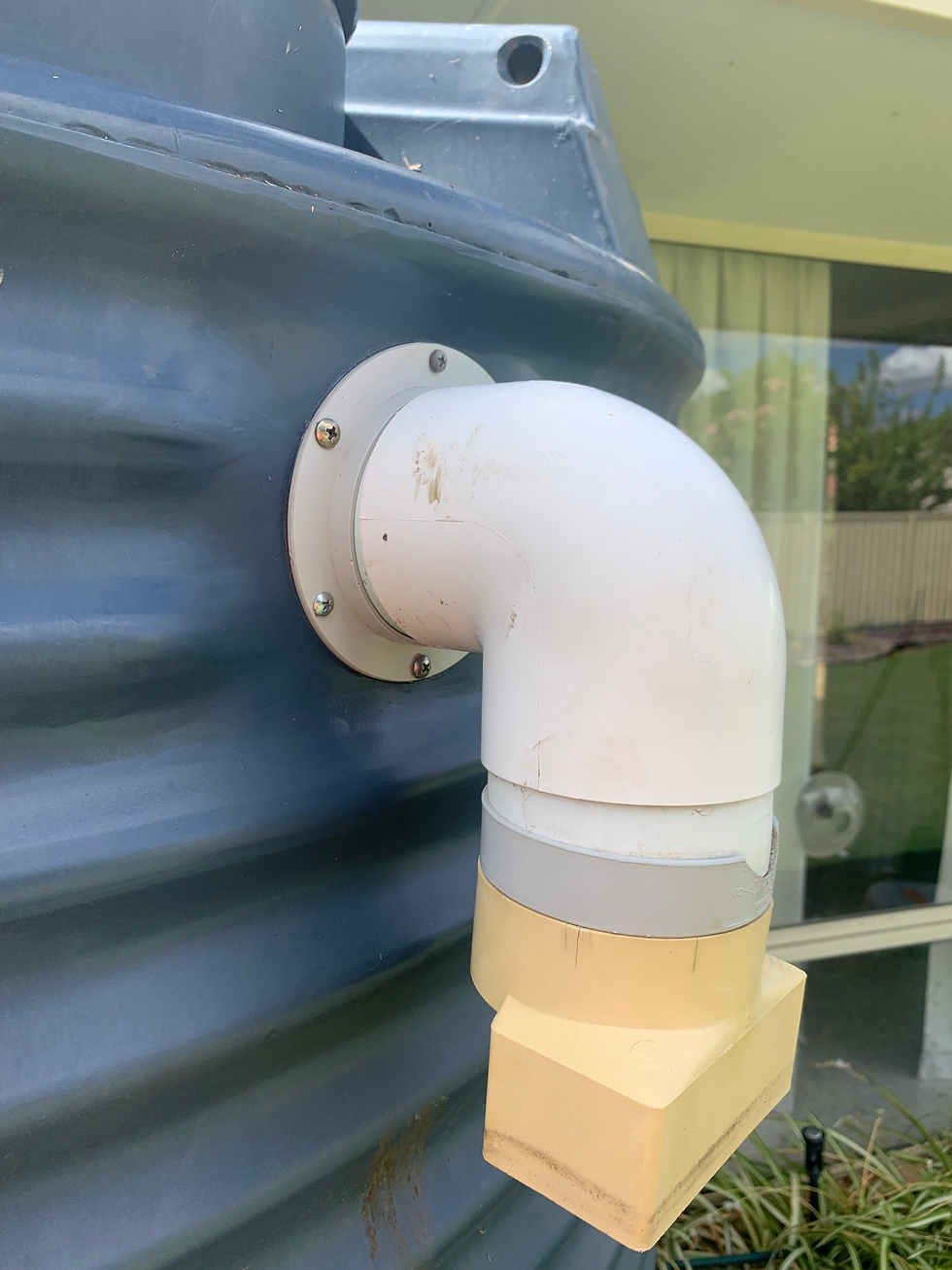Cleaning Out a Plastic Rainwater Tank
- Chris Taylor

- Mar 28, 2023
- 2 min read
Updated: Jul 14, 2023
Rainwater tanks are a good way to get a bit of extra water for your garden over summer, particularly useful if you have a vegetable garden or gardens. Recently, in Western Australia bore watering was restricted from three times a week to twice a week due to reduced rainfall from climate change.
If you have a plastic rainwater tank, chances are it's fairly easy to clean out. First, disconnect any fittings and attachments.

Then, empty as much water out as you can by tipping it through the outlet. If you have a steel or concrete tank, this is probably not worth attempting.
Next, make sure it is clear of the inlet from the gutter. If it is a well installed rainwater tank, the inlet will not be directly connected to the rainwater tank and the tank will have an easy to remove filter. Tip the tank on its side.

Lift the base onto a prop (like a strong chair) and start hosing the inside. With the inlet on top it's easier to see what you're doing, so try this first.

With the outlet on the ground it will all drain out. Wipe any remaining sand out with a cloth - it's the sand that can damage the tap and block any connected retic.

I don't recommend going inside the tank, or you may be going for a roll!
I also re-sealed the overflow ring as it was leaking, causing the loss of the top 150 mm or so of rainwater. All this required was silicone and three extra screws - no need to be too fussy with the screws either, as long as the heads are flush on the thread side. The tricky part was scraping the old mastic off with a screwdriver.




Comments